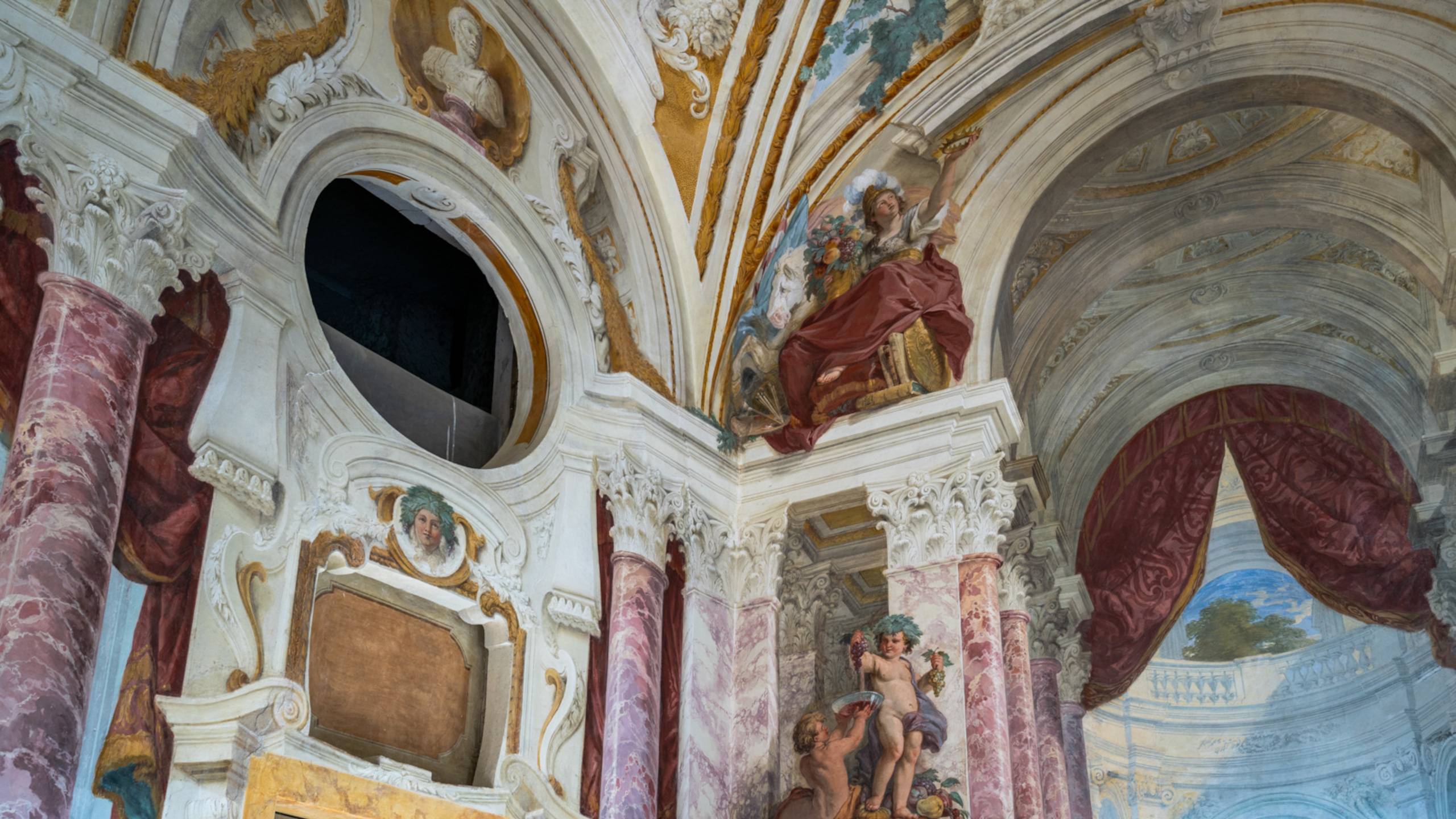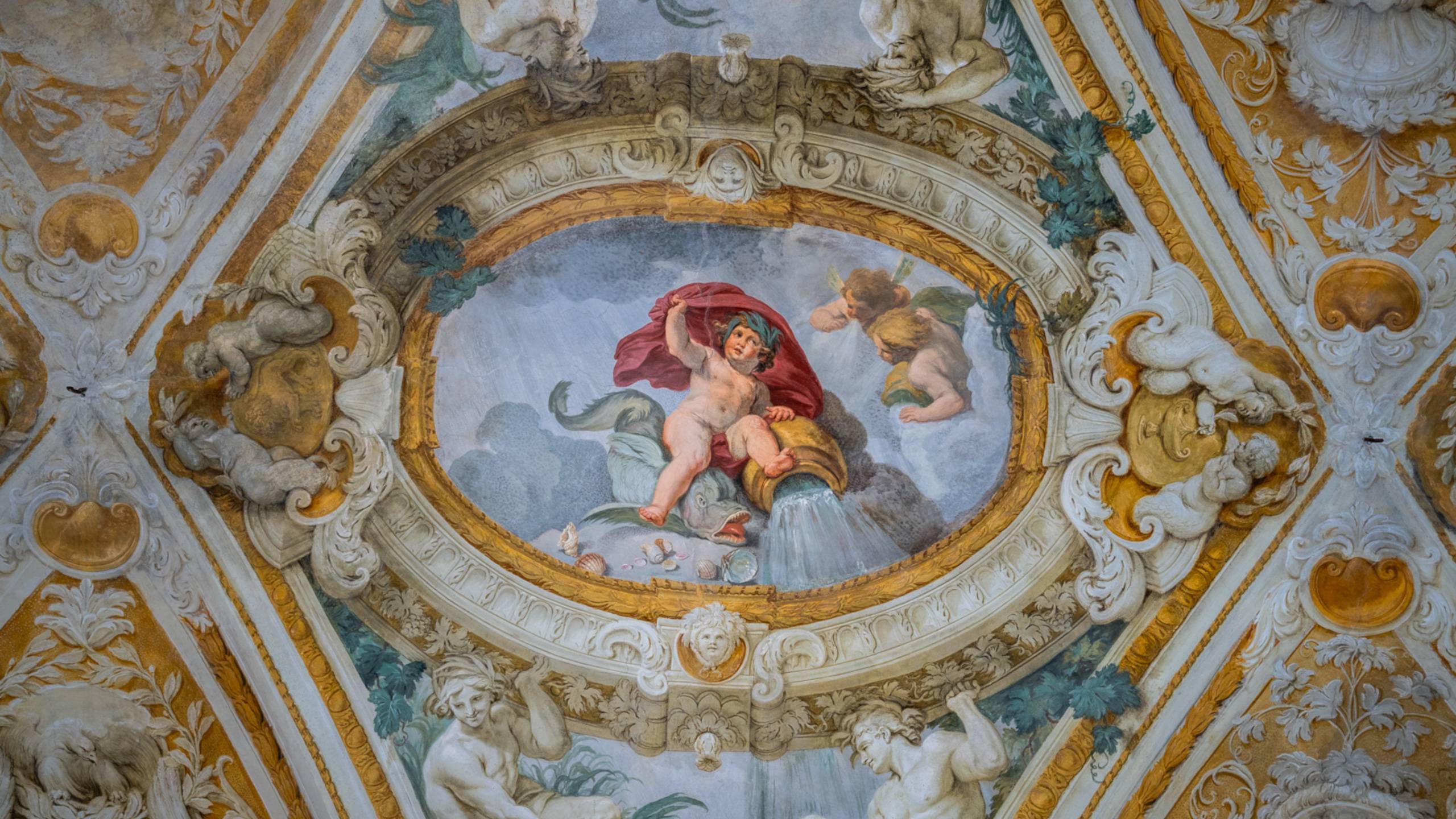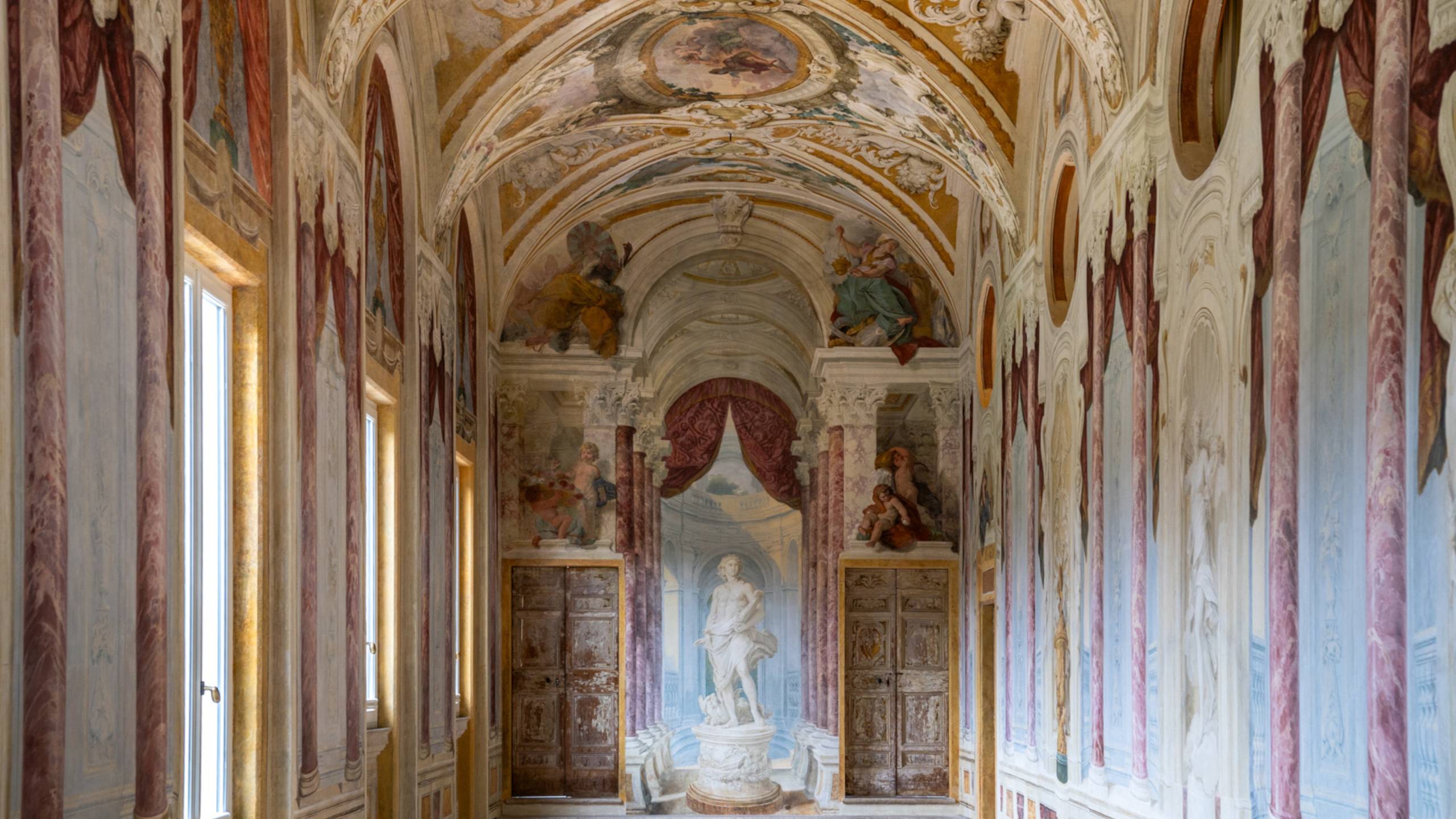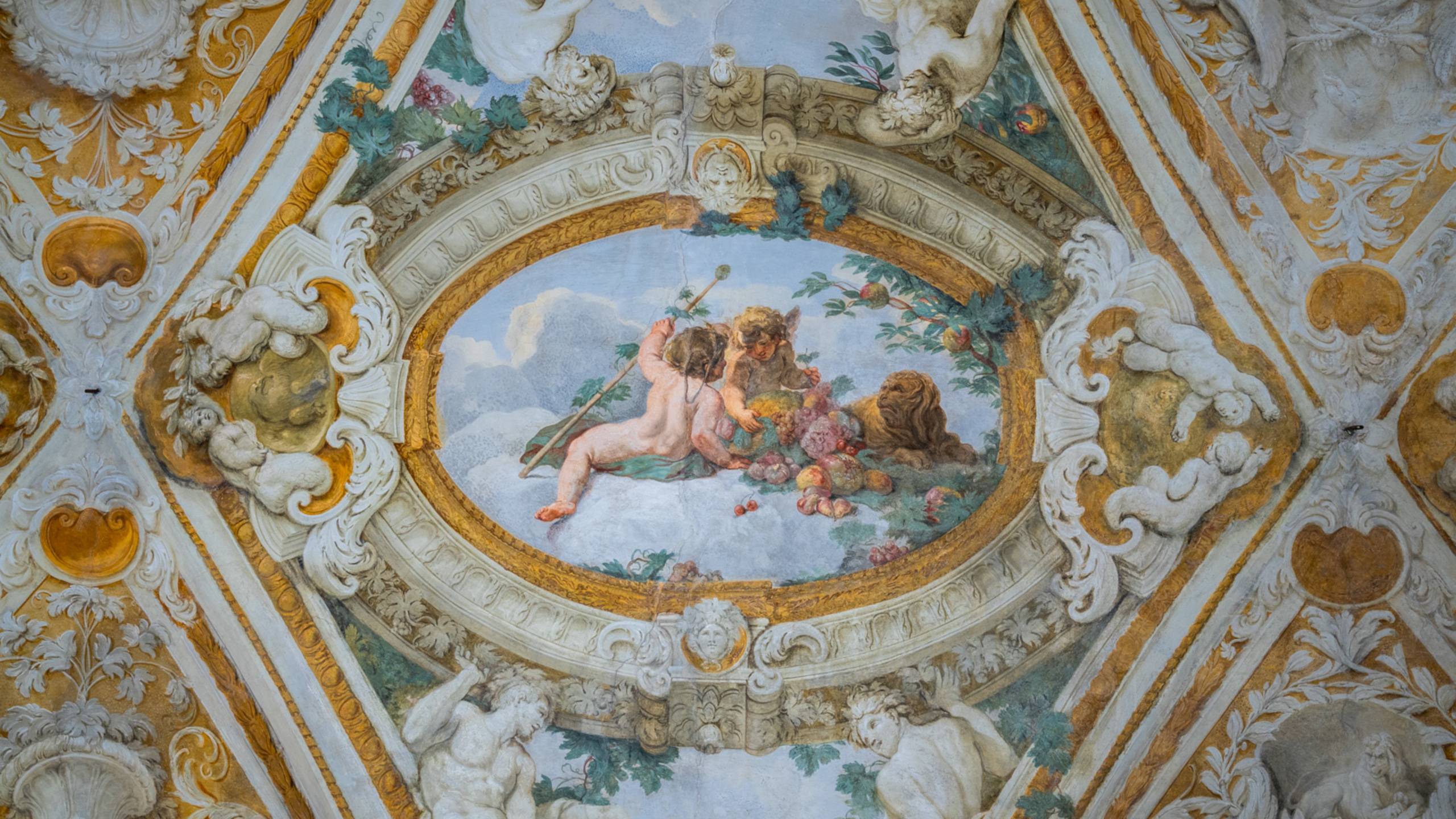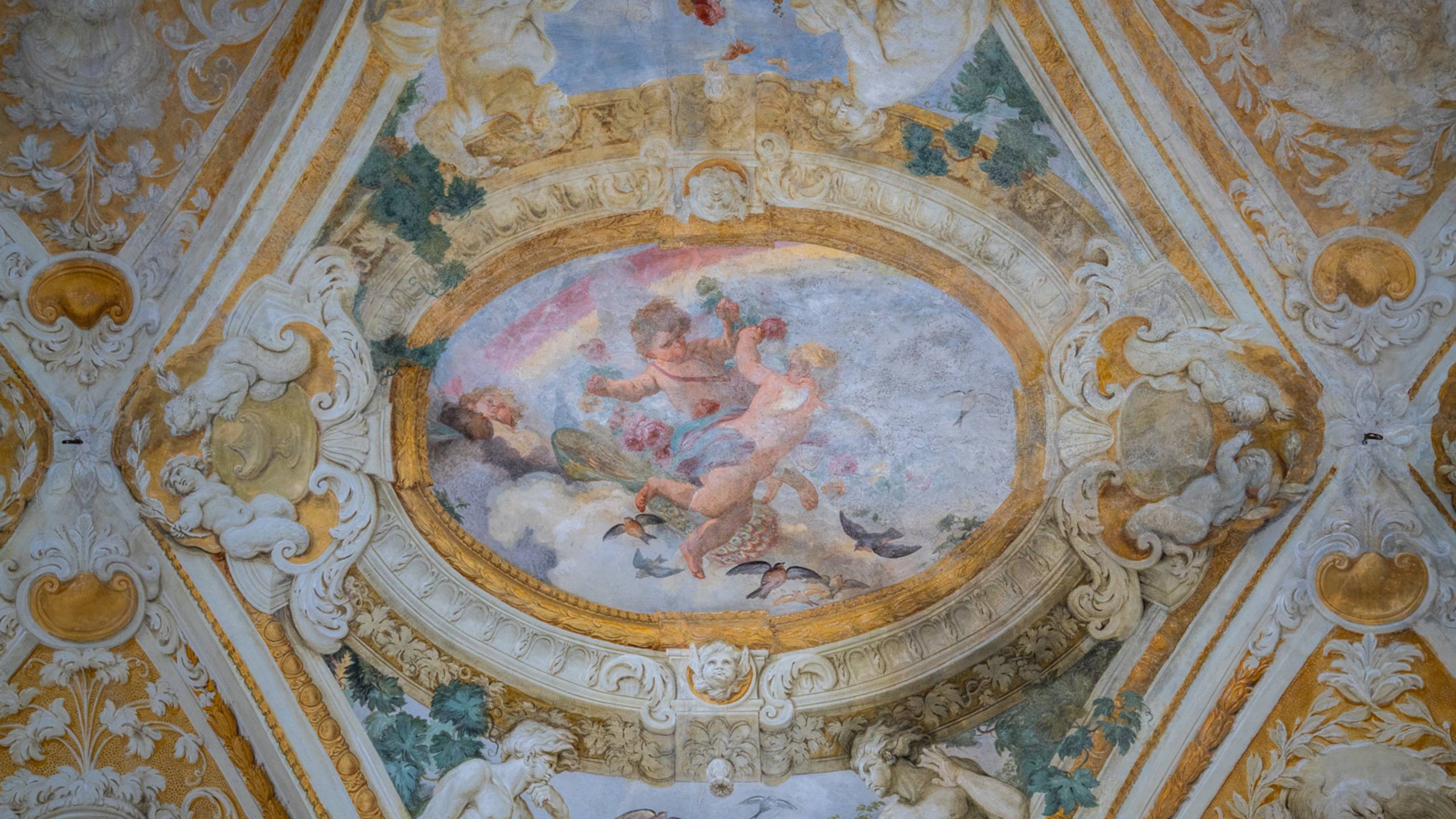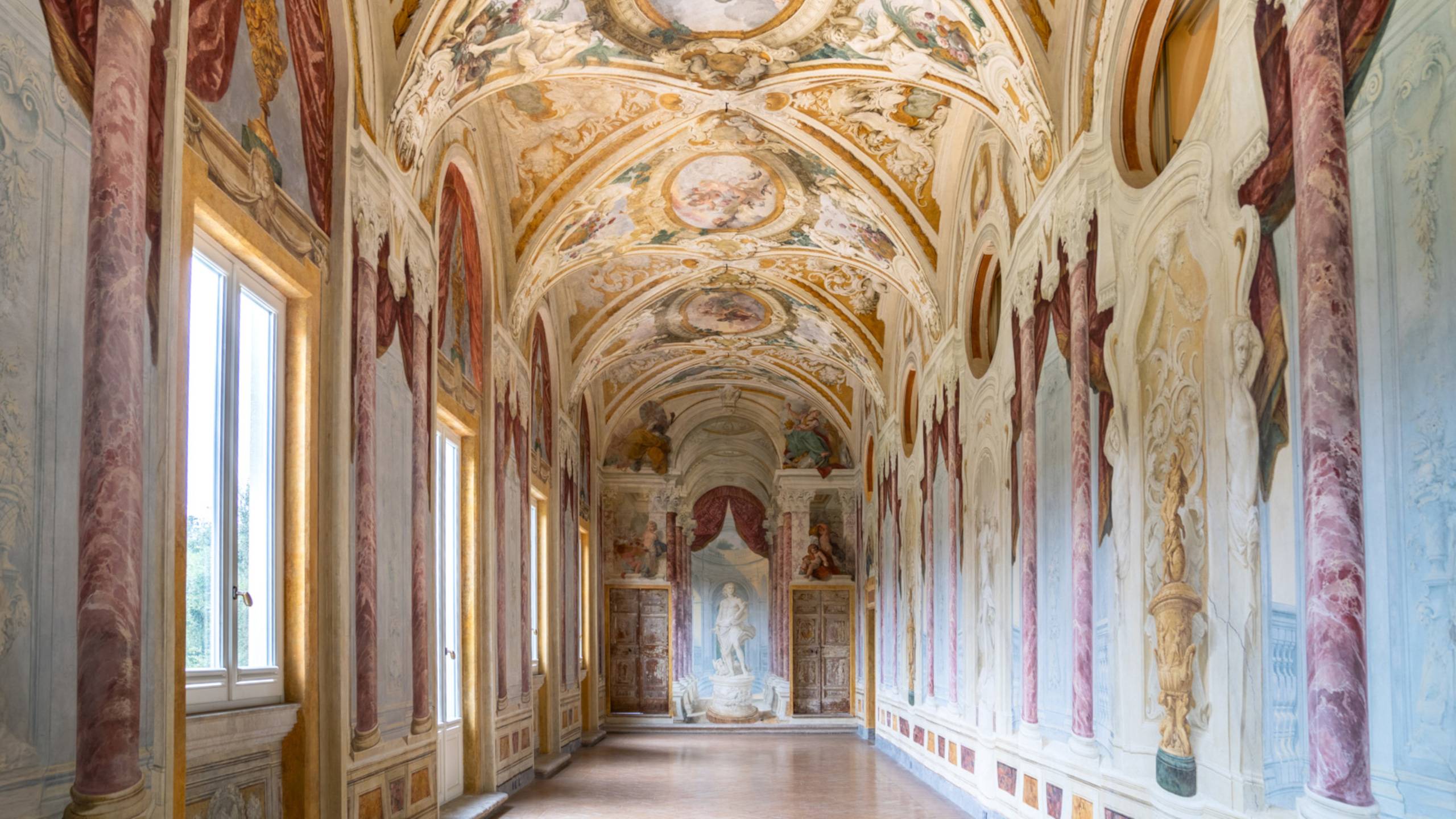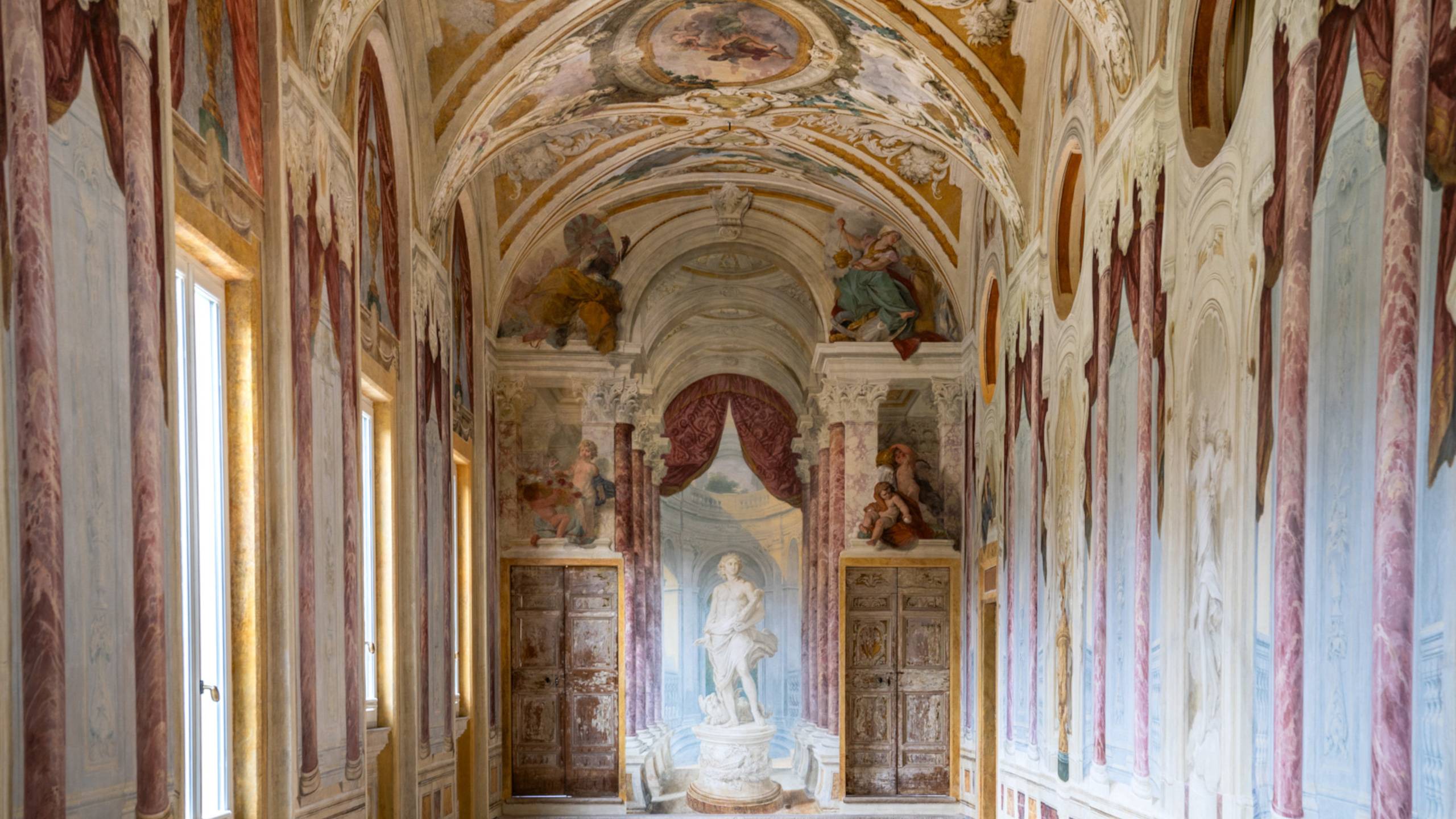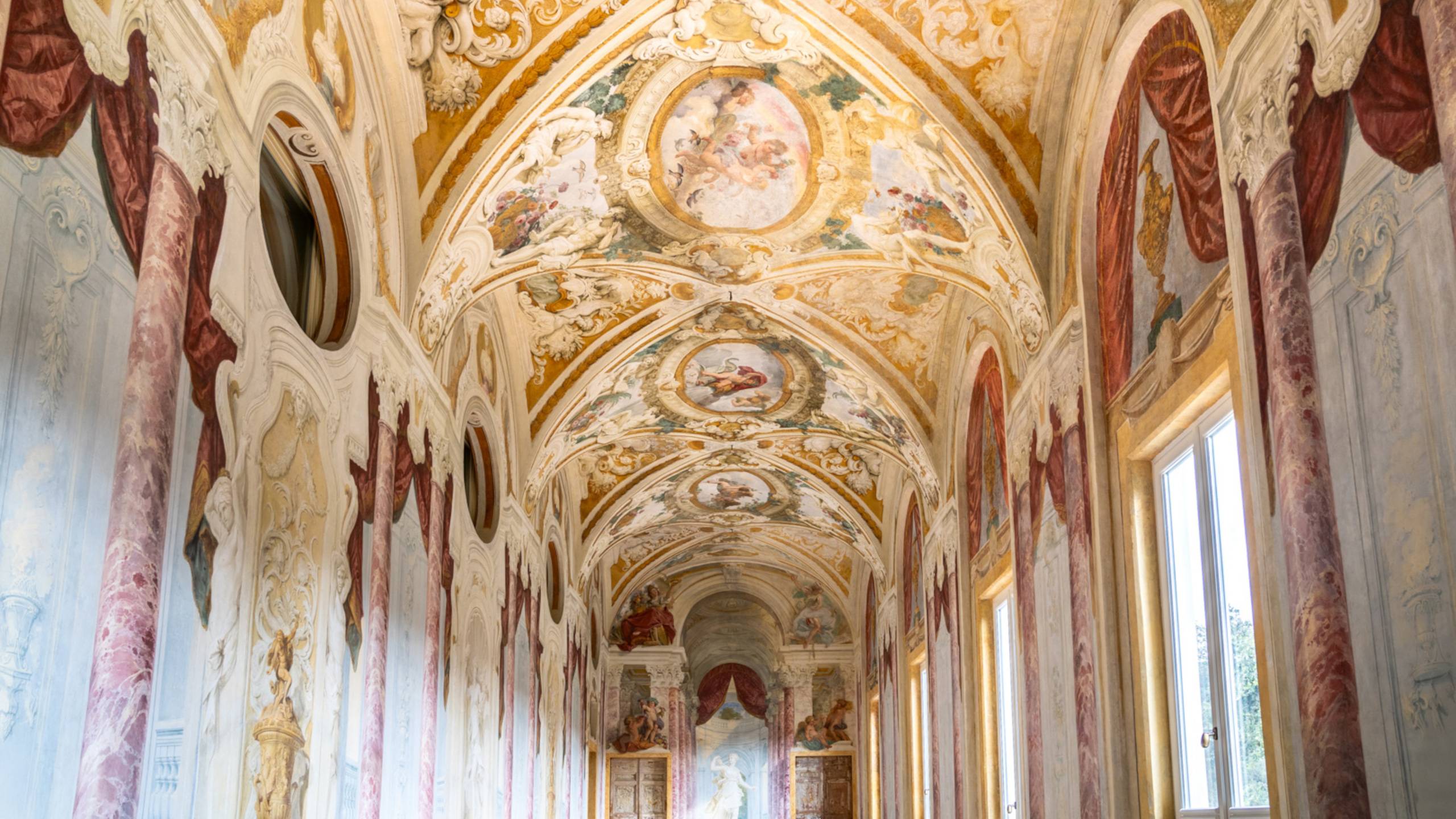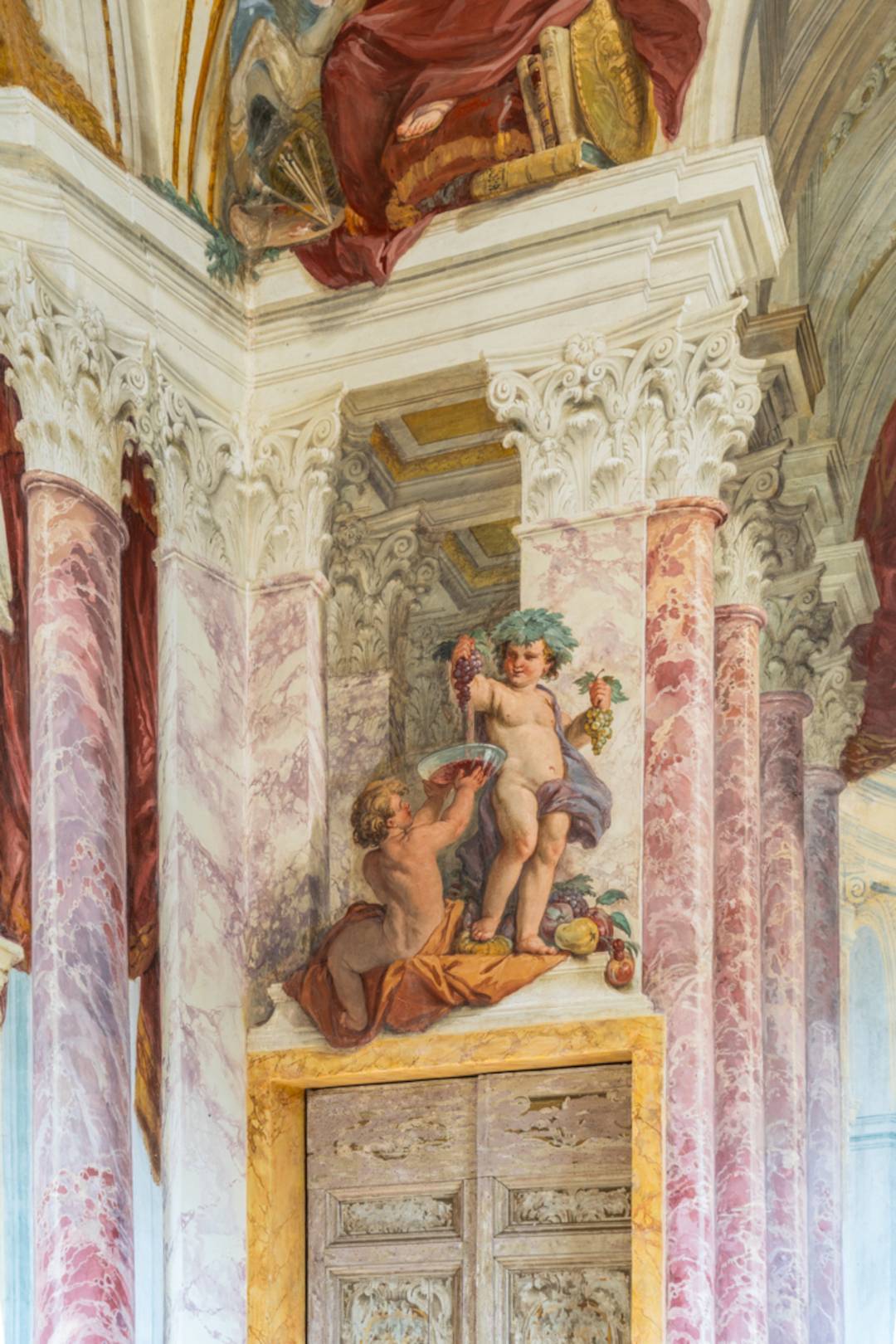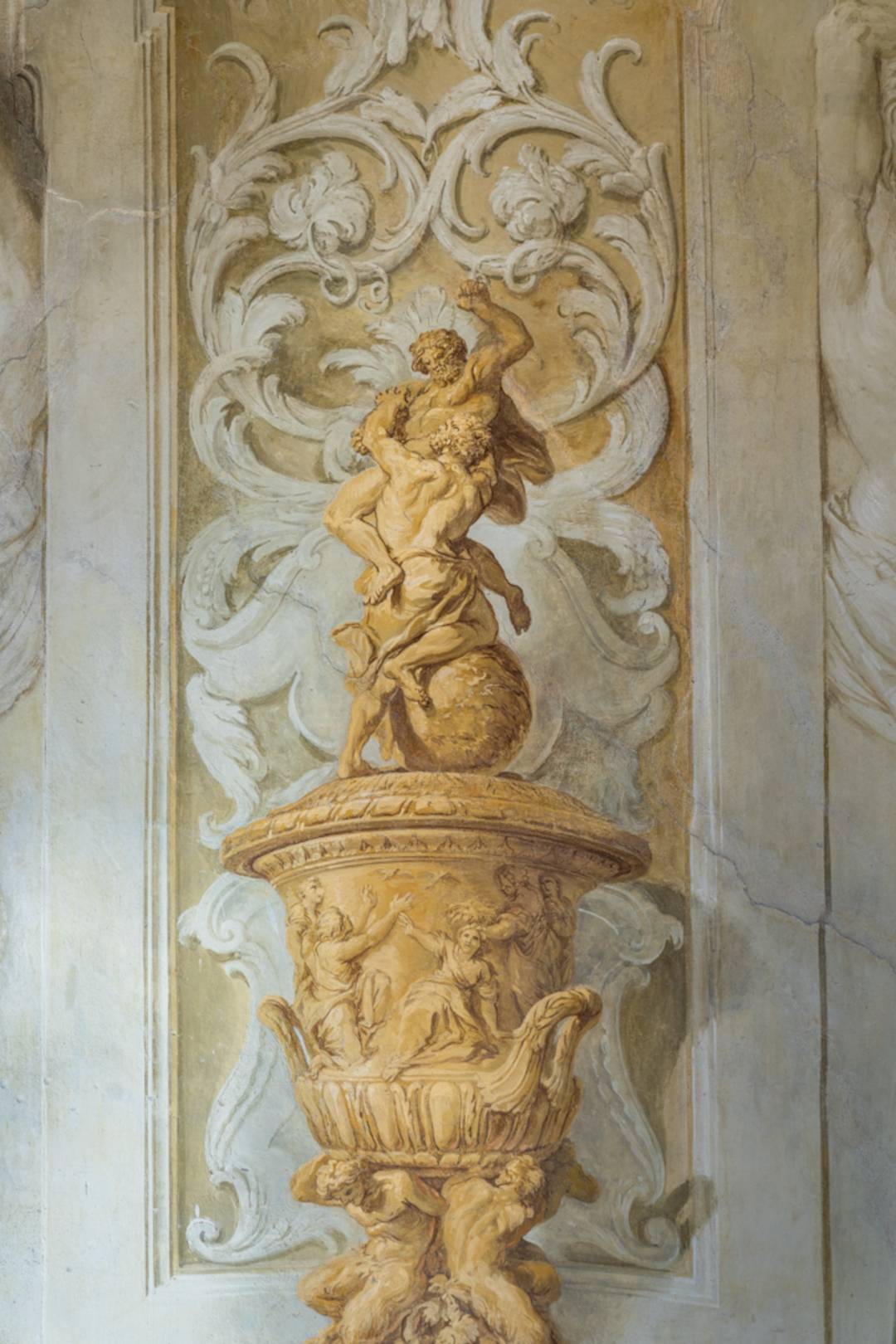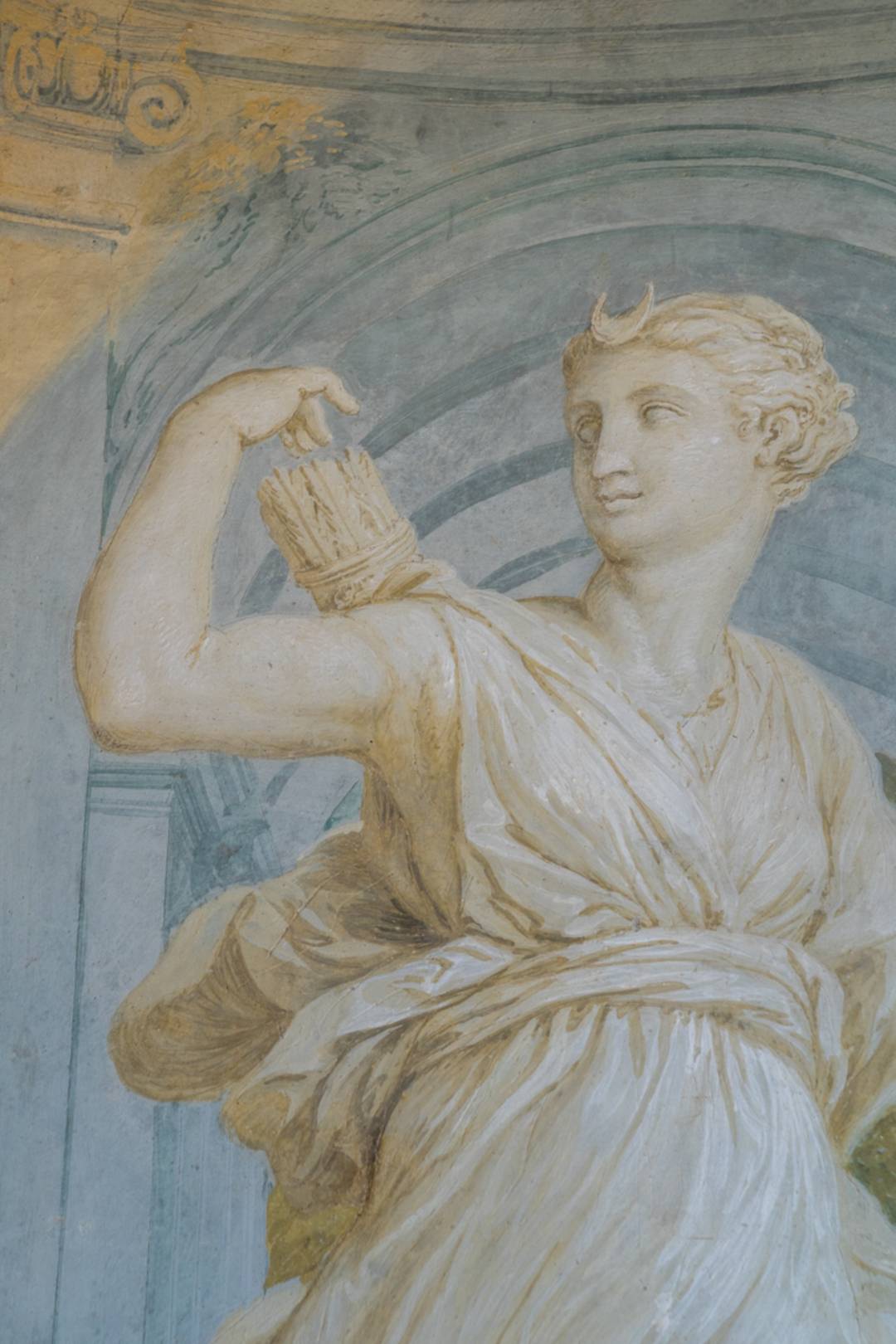In 1737, Odescalchi commissioned the decoration of the new gallery on the first floor to one od the most famous painters of the time: Giovanni P. Pannini.
When the visitor steps inside this room, he can understand the spirit underlying the whole composition.
The suggestions are made all the more realistic by the background color of light blue for the sky, and the abundance of vines intertwining the pillars and frames.
Skillfully painted perspectives simulate an open porch, as if Pannini wanted to recreate the atmosphere of the original terrace that had been covered by the new gallery.
This work immerses us in a complex cosmological figuration representing allegories of the Night, the Months, the Seasons, the Continents, the Elements, the Sun, the Moon, and the Zodiac.
The shorter walls portray a perspective that dramatically extends the actual dimensions of the room.
Rows of columns supported a series of small domes, and beyond them, a rich red curtain opens to show an illusionary garden and the open sky.
Two very realistic statues are painted in the middle of these perspectives: Apollo and Diana standing in opposition to each other and symbolizing the Sun and Moon respectively.
The Four Season are portrayed as pairs of little boys balancing on the door-frames, while they quarrel for the grapes of Autumn, play with the corn of Summer and the flowers of Spring or jest with the snow of Winter. The imposing female figures represent the four continents known at the time.
Europe carries the crown of aristocracy and a painter’s palette comes out of her gown together with books, as if the painter wanted to consecrate it as the cradle of culture and art. The spine off one of the books clearly shows the artist’s autograph: I.P.P. for loannes Paulus Pannini.
America is represented as a warrior, whose and his decorated with feathers reproducing the colors of the British colonies, stabbing a dragon with a spear.
A camel accompanies the allegory of Asia who carries a smoking incense burner, the produce coming from eastern countries.
Africa is a haughty dark-skinned woman, who brings back to memory the typical portrayals of the queen of Sheba.
On the longer walls pairs of columns seem to support the vaults of the ceiling.
Pillars in the shape of man frame enormous bronze vases.
Simulated statues find place in shell-shaped niches.
Beyond the columns of fake marble, heavy red curtains open onto an illusionary terrace above the windows, shell-shaped niches host the busts of the twelve Caesars, representing the 12 months of the year.
The allegories of the elements are found in each of the four ovals of the ceiling, each supported by powerful male figures.
At the feet of the male figures, colorful still-lives alternate according to the elements they accompany: flowers and produce of the soil for earth, water-plants, corals and shells for water, climbing lens and birds for air; burners and smoke for fire.
The 12 signs of the Zodiac, surrounded by intricate winged sphinxes and eagles, are found in the triangles outlined by the cross vaults.
One of the most beautiful paintings in the Villa must be the allegory of the Night which concludes the entire cosmological cycle balancing on a doorframe, a little boy is sleeping under starred blue mantle, between an owl and a bat


